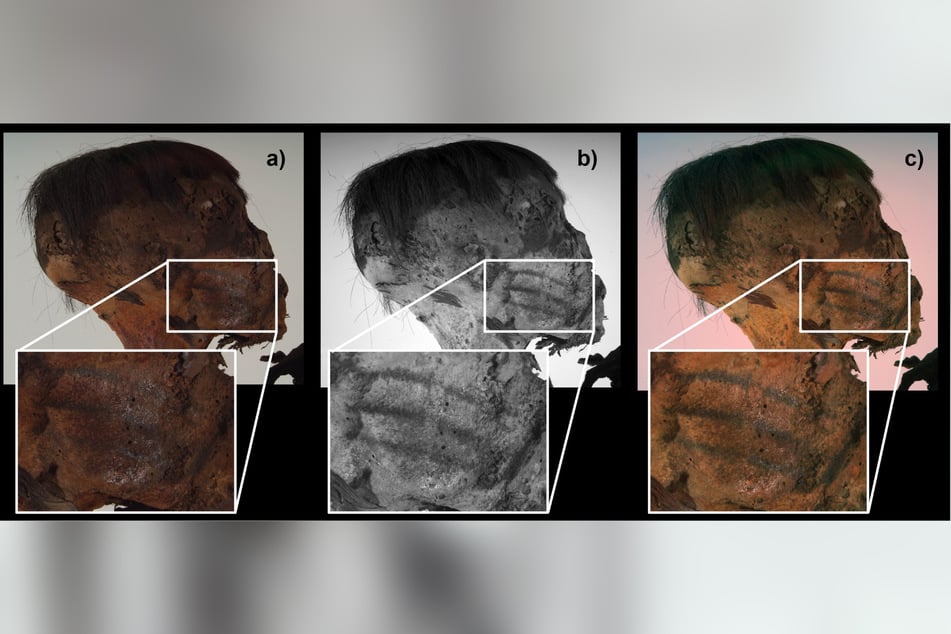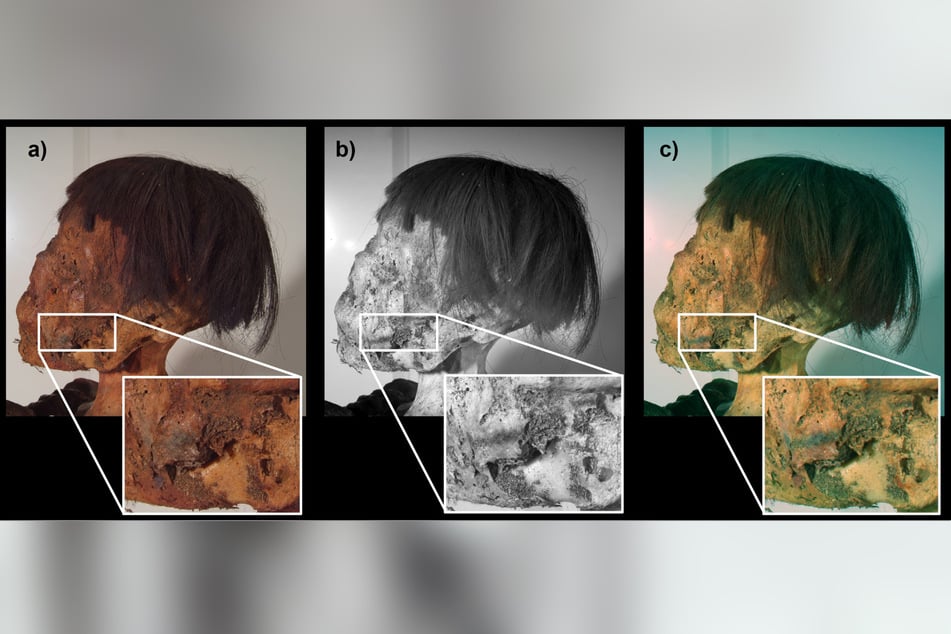Mysterious mummy examined: One detail has researchers very puzzled
Turin (Italy) - For years, the Andean mummy lay dormant in the depot of the Museum of Anthropology and Ethnography at the University of Turin ( Italy ). Now scientists have thoroughly examined the body of the woman who died more than 800 years ago.

The researchers report on their findings in the"Journal of Cultural Heritage".
The mummy was measured in detail using an elaborate process, a multispectral photo analysis.
Fascinating: tattoos were found on both cheeks of the adult woman, who probably lived in South America around 800 years ago. Three vertical lines, around six centimetres long, run from mouth to ear. On her wrist, however, the woman wore an S-shaped pattern, the researchers report.
For the team led by anthropologist Dr. Gianluigi Mangiapane, the latest discovery is a sensation. Until now, tattoos could only be detected on very few mummies. Mummified skin is often not sufficiently preserved. Possible tattoos are not visible to the naked eye, according to the study.
An interesting detail: the ink used was not obtained from charcoal, as is often the case with traditional tattoos, but from magnetite, a mineral rock. The researchers suspect that the tattoos may have once had a bluish-black shimmer.
Mummy of Turin: Unique tattoos adorned her face


Who was the woman who lived more than 800 years ago?
In addition to the mummy that has now been researched, tattoos have also been found on Ötzi. The perfectly preserved "Iceman" was found in a glacier in South Tyrol in 1991 and probably lived at the end of the Neolithic period, around 3250 BC. Similar evidence has also been found in mummies from Egypt, which have been dated to before the 1st Dynasty and are therefore older than 5000 years.
However, it is completely unclear who the mummy from Turin was and which culture it belonged to. The patterns are "unusual" and cannot be assigned to any known culture. Apparently the woman of unknown age died a natural death and was buried in a sitting position, as is customary in the Andes. She was probably wrapped in textiles after her death.
The exhibit was donated to the museum in 1931. However, the grave goods were missing. There is also no information on how it was found. The identity of the mummy of Turin will probably remain a mystery forever.